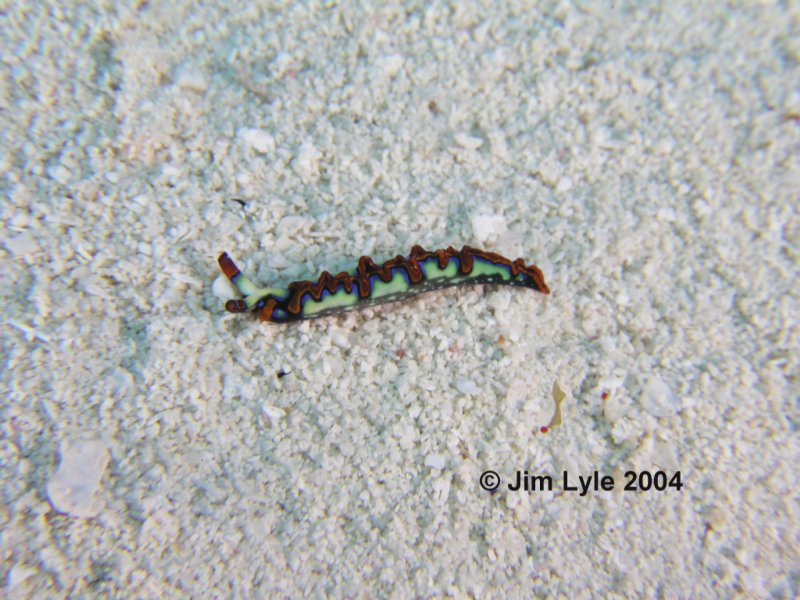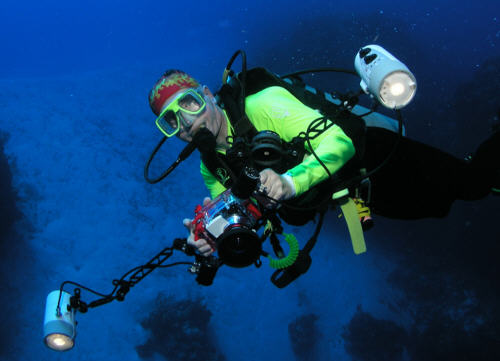 |
Thuridilla picta
Taken at Cozumel, MexicoPhoto courtesy of Jim Lyle
Thuridilla picta
Previously referred to as Elysia picta (see Gosliner, 1995), this brighly colored sacoglossid is common in the Mexican Caribbean. Although pretty small (up to 12 mm in length), this species is often found crawling out on sandy bottoms as seen here in Jimís photo, where it can be easily detected. Searching through tufts of green algae will also produce specimens.
The color patterns of this species make it impossible to confuse with any other species. The edge of the parapodia begins with a broard red-orange band, followed by black, blue and then yellow bands. There are yellowish white specks on the lower portion of the body and at the tips of the rolled rhinophores.
The species is common throughout the Carribean, including Florida, Bahamas, Jamaica, Bermuda, Curacao, and it has also been reported from the East Atlantic at the Canary Islands , and Cape Verde Islands, Madeira.
References:
Gosliner, T.E. 1995. The genus Thuridilla (Opisthobranchia: Elysiidea) from the tropical Indo-Pacific, with a revision of the phylogeny and systematics of the Elysiidae. Proceedings of the California Academy of Sciences, 49(1): 1-54.
Danville, Calif
Jan. 2005
Jim Lyle

|
This was a extra special trip to Cozumel as we found nine species of branchs; in addition to Thuridilla picta: Hypselodoris ruthae, Chelidonura hirudinina, Gastropteron chacmol, Berthelina engeli, Cyerce cristallina, Aplysia dactylomela, Plurobranchieaa inconspicua, and Platydoris augustipes. Dave Behrens graciously helped with the identification of some of our finds.
A report about our trip to Cozumel and pictures of all the nudibranchs .
A report and images of sixteen+ nudibranch species here in So Cal .
My web page .
Taxonomic information courtesy of:

David W. Behrens
Author:
Pacific Coast Nudibranchs
Send Dave mail at dave@seachallengers.com
|
